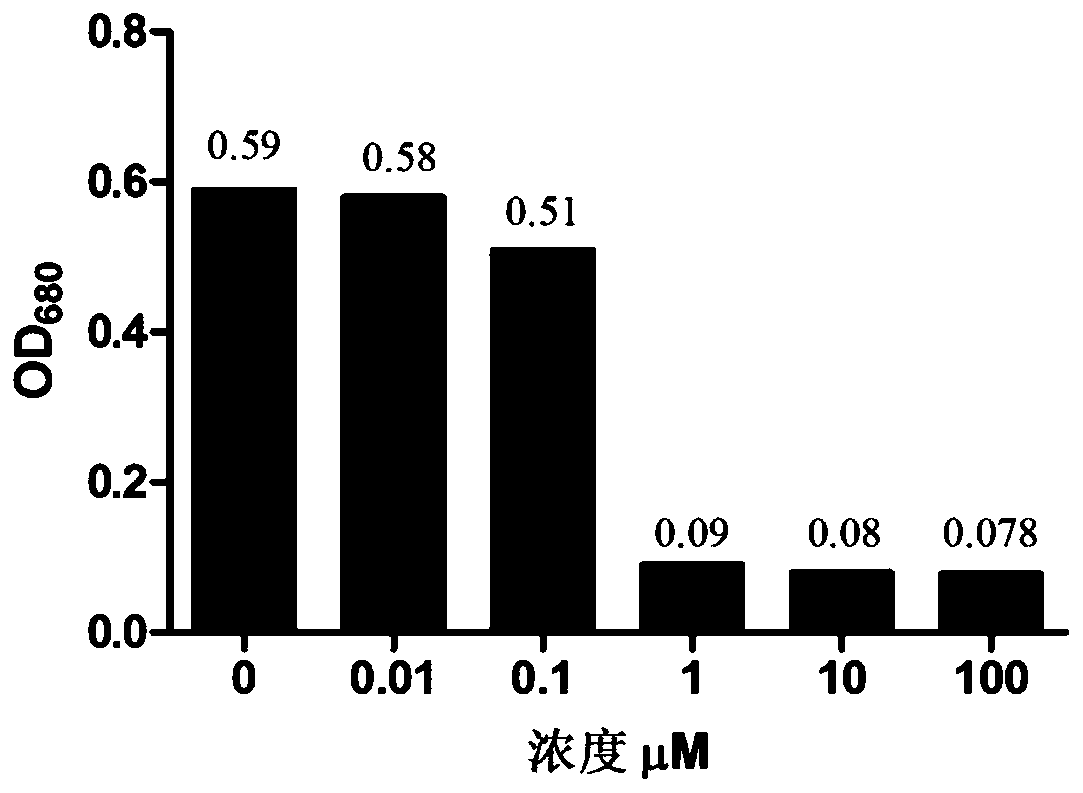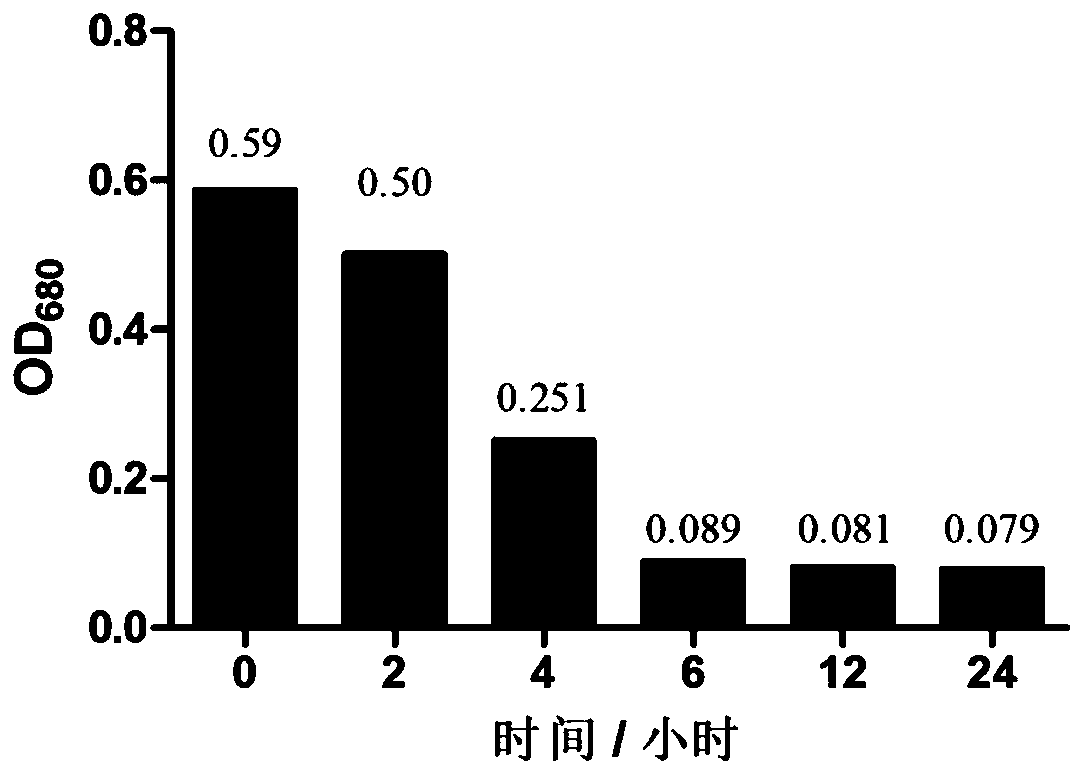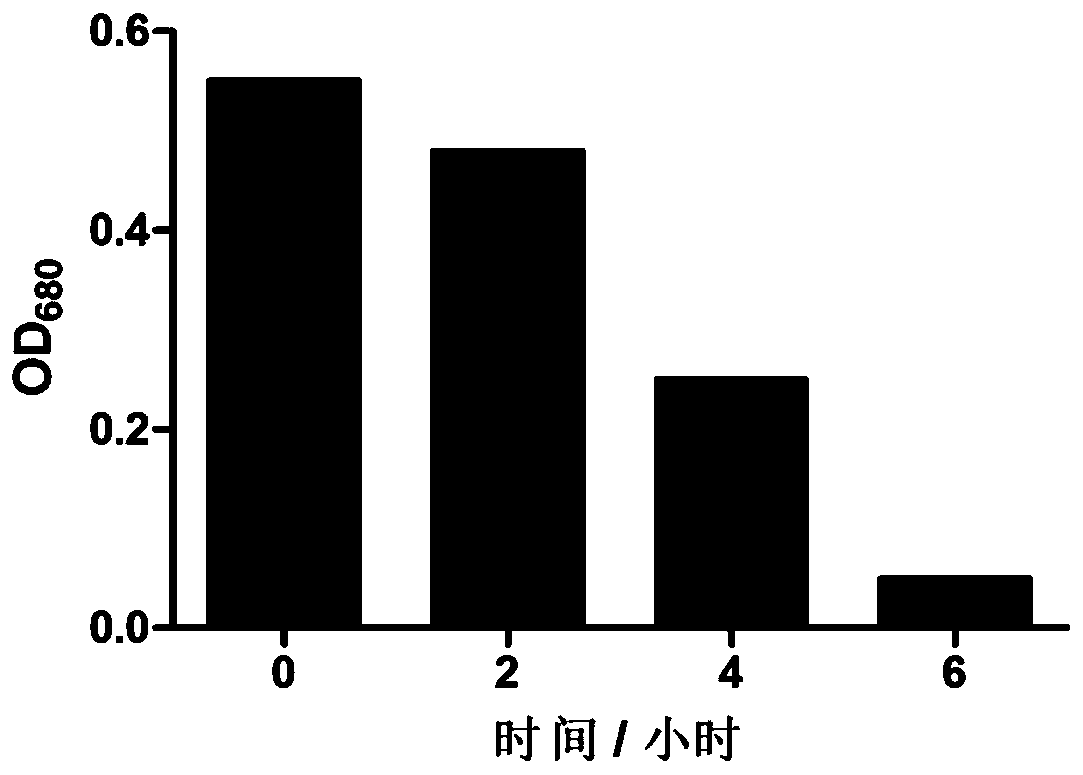Method for removing heavy metals and blue-green algae in water
A heavy metal and water technology, applied in chemical instruments and methods, water pollutants, water/sewage treatment, etc., can solve problems such as unsatisfactory effect and efficiency, different efficiencies, etc., to achieve low cost, easy salvage, and improved adsorption efficiency Effect
- Summary
- Abstract
- Description
- Claims
- Application Information
AI Technical Summary
Problems solved by technology
Method used
Image
Examples
Embodiment 1
[0028] Source of algae species: The algae species is a toxin-producing strain of Microcystis aeruginosa (FACHB905), which comes from the freshwater algae species bank of Wuhan Institute of Hydrobiology, Chinese Academy of Sciences. After three months of continuous culture, the normal growth was used for this experiment. Copper ions with a final concentration of 30 μM and mercury ions with a final concentration of 3 μM were added to the solution of toxin-producing strains of Microcystis aeruginosa, and the natural water bloom and heavy metal treatment were simulated under laboratory conditions.
[0029] Culture conditions
[0030] (1) The medium formula is: NaNO 3 1500mg / L, K 2 HPO 4 ·3H 2 O 40mg / L, MgSO 4 ·7H 2 O 75mg / L,
[0031] CaCl 2 2H 2 O 36mg / L, Na 2 CO 3 20mg / L, citric acid 6mg / L, ferric citrate 6mg / L, Na-EDTA1mg / L;
[0032] (2) Add 1.2L culture medium into a 2L Erlenmeyer flask, sterilize at 121°C for 30min, take it out when the pressure drops to zero, and...
Embodiment 2
[0037] Adopt experiment material described in embodiment 1 and culture condition, when Microcystis aeruginosa is in logarithmic phase and when growing well, carry out following experiment:
[0038] Get 25ml of Microcystis aeruginosa (FACHB905), add copper ions with a final concentration of 30 μM and mercury ions with a final concentration of 3 μM, and finally add L-cysteine with a final concentration of 1 mM, and let stand for 2, 4, 6, After 8, 12, and 24 hours, measure the absorbance of the supernatant at 680 nm with an ultraviolet spectrophotometer.
[0039] see figure 2 , the sedimentation effect of Microcystis aeruginosa after standing at different time points is shown in figure 2 . Depend on figure 2 It can be seen that when the final concentration of L-cysteine is 1mM, the number of cells in the supernatant becomes the least after standing for 6 hours.
Embodiment 3
[0041] An application based on L-cysteine to remove heavy metals and cyanobacteria:
[0042] Add 6L of water bloom cyanobacteria algal solution to a 10L glass tank with a cell concentration of 1.68*10 7 A total of 6 tanks per cell / ml, respectively add copper ions with a final concentration of 30 μM and mercury ions with a final concentration of 3 μM in each tank, and the concentration of L-cysteine obtained in case 1 in 3 glass tanks Add L-cysteine, and the remaining 3 glass cylinders are the control group without any treatment. Test every 2h and end after 6h.
[0043] see image 3 , Figure 4 , Figure 5 and Figure 6 , to detect algae cell concentration, copper ion concentration, mercury ion concentration and algae toxin concentration in the test group and control group respectively.
[0044] Over time, the concentration of algal cells in the control group ( image 3 ), copper ion concentration ( Figure 4 ), mercury ion concentration ( Figure 5 ), algal toxin ...
PUM
 Login to View More
Login to View More Abstract
Description
Claims
Application Information
 Login to View More
Login to View More - R&D
- Intellectual Property
- Life Sciences
- Materials
- Tech Scout
- Unparalleled Data Quality
- Higher Quality Content
- 60% Fewer Hallucinations
Browse by: Latest US Patents, China's latest patents, Technical Efficacy Thesaurus, Application Domain, Technology Topic, Popular Technical Reports.
© 2025 PatSnap. All rights reserved.Legal|Privacy policy|Modern Slavery Act Transparency Statement|Sitemap|About US| Contact US: help@patsnap.com



